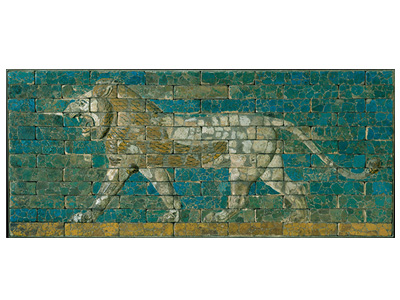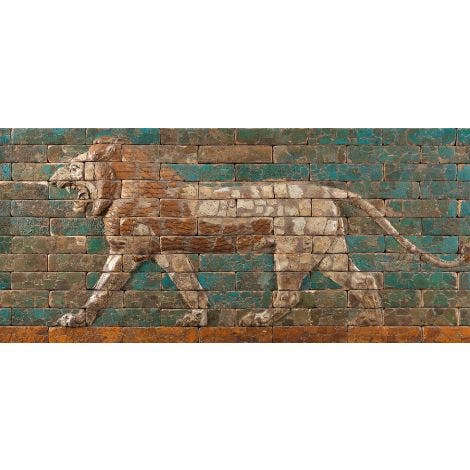Local Storage seems to be disabled in your browser.
For the best experience on our site, be sure to turn on Local Storage in your browser.
Striding Lion 2

Our Inspiration: Panel with striding lion
Babylonian, Mesopotamia
Ceramic, glaze; ca. 604–562 BCE
Fletcher Fund, 1931 31.13.1
During this period Babylon became the city of splendor described by Herodotus and the Old Testament Book of Daniel. Because stone is rare in southern Mesopotamia, molded glazed bricks were used for building, and Babylon became a city of brilliant color. Relief figures in white, black, blue, red, and yellow decorated the city's gates and buildings.
This relief of a lion–the animal associated with Ishtar, goddess of love and war–served to protect the street; its repeated design served as a guide for the ritual processions from the city to the temple.

Our Inspiration: Panel with striding lion
Babylonian, Mesopotamia
Ceramic, glaze; ca. 604–562 BCE
Fletcher Fund, 1931 31.13.1
During this period Babylon became the city of splendor described by Herodotus and the Old Testament Book of Daniel. Because stone is rare in southern Mesopotamia, molded glazed bricks were used for building, and Babylon became a city of brilliant color. Relief figures in white, black, blue, red, and yellow decorated the city's gates and buildings.
This relief of a lion–the animal associated with Ishtar, goddess of love and war–served to protect the street; its repeated design served as a guide for the ritual processions from the city to the temple.



